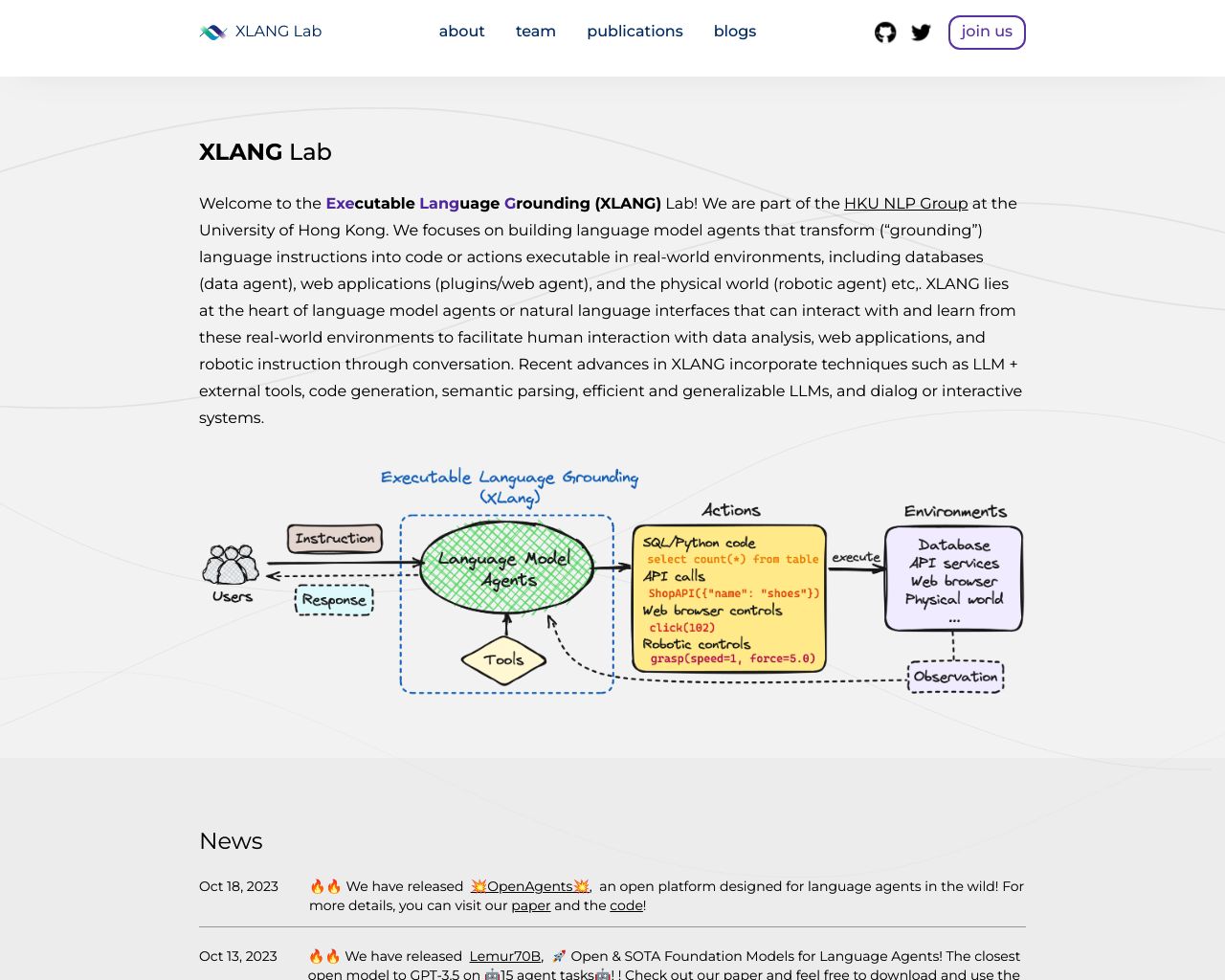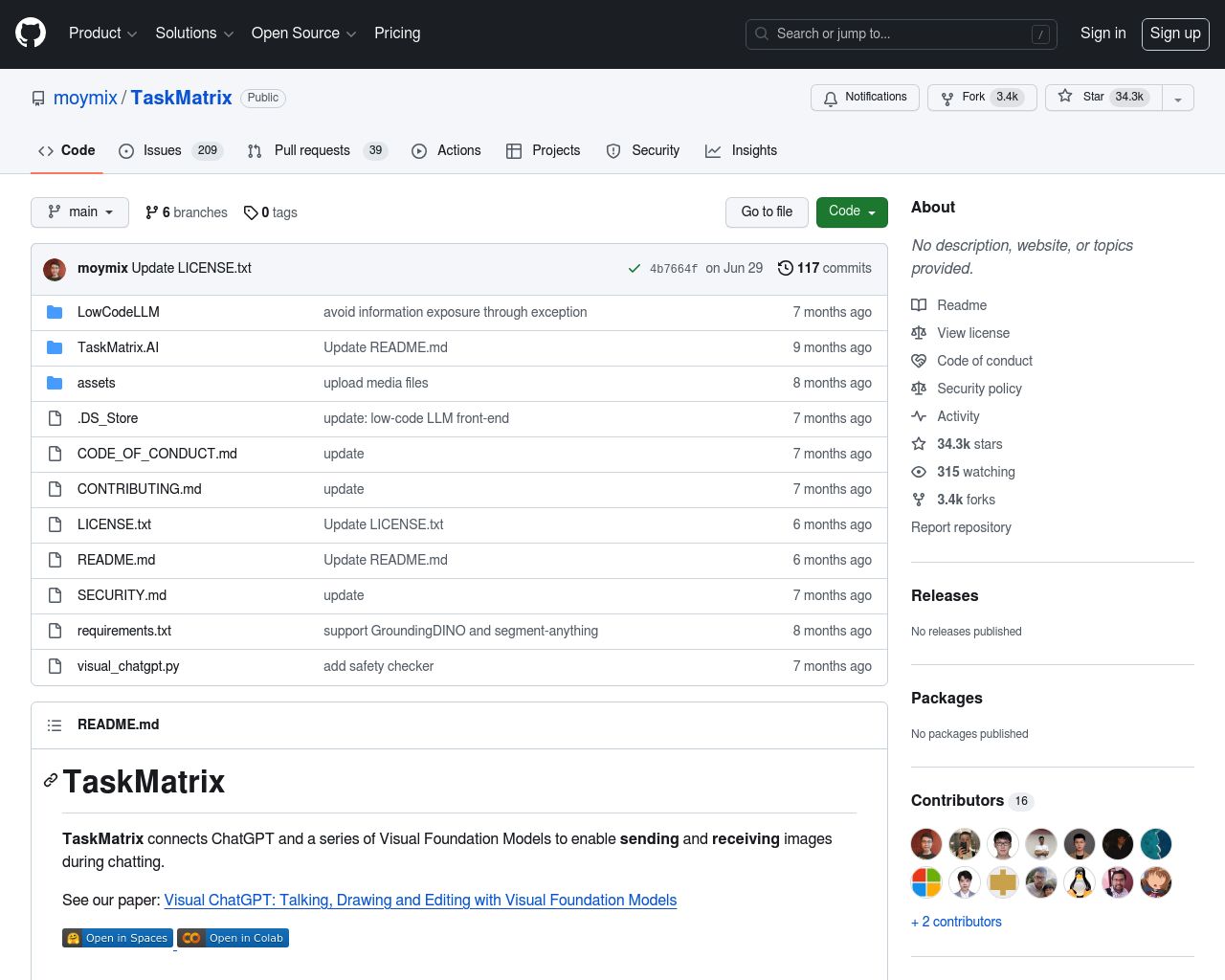OpenAgents vs TaskMatrix – A Detailed Comparison of Two Companies
AI agent platforms revolutionize how businesses and developers harness artificial intelligence. OpenAgents, TaskMatrix, and SmythOS offer unique approaches to AI integration, each with distinct strengths and limitations. This comparison delves into the core features, development tools, and practical applications of these platforms. We’ll explore how OpenAgents specializes in data analysis and web automation, TaskMatrix enhances foundation models through API integration, and SmythOS provides a comprehensive solution for AI agent development and deployment. Whether you’re a seasoned developer, a business leader, or an AI enthusiast, this analysis will help you navigate the landscape of AI agent platforms and choose the solution that best fits your needs.
OpenAgents Overview
OpenAgents offers an open-source platform for creating, hosting, and managing AI agents. The system centers around three specialized agents: Data Agent for complex data analysis, Plugins Agent with over 200 integrated tools, and Web Agent for autonomous web browsing.


OpenAgents excels in data processing, task automation, and web interaction. The Data Agent simplifies large dataset analysis, generating insights for fields like marketing. The Plugins Agent’s vast toolkit adapts to diverse user needs, from weather checks to online shopping. Web Agent streamlines internet navigation through a Chrome extension, automating web content interaction.
OpenAgents excels in data processing, task automation, and web interaction. The Data Agent simplifies large dataset analysis, generating insights for fields like marketing.
The platform emphasizes user-friendliness with a web UI and backend server for easy agent communication. It supports both development and production environments, allowing users to test and deploy agents in various settings. OpenAgents provides debugging capabilities and detailed logs for transparency and troubleshooting.
While OpenAgents offers powerful features, it lacks some advanced capabilities. The platform doesn’t include a visual builder or no-code editor, requiring coding knowledge for agent creation. It also doesn’t support multimodal inputs or multi-agent collaboration. Despite these limitations, OpenAgents remains a versatile tool for developers and businesses seeking customizable AI solutions.
TaskMatrix Overview
TaskMatrix.AI represents Microsoft’s foray into advanced AI ecosystems, designed to enhance general-purpose foundation models like GPT-4. By integrating these models with specialized APIs, TaskMatrix.AI functions as a project manager, bridging diverse AI capabilities to perform a wide range of tasks efficiently.
The platform’s core strength lies in its ability to connect powerful foundation models with millions of APIs, enabling the execution of both digital and physical tasks. TaskMatrix.AI understands user instructions, generates executable action codes, and performs tasks using the most appropriate APIs. This versatility makes it an ideal solution for developers seeking to create custom AI models or leverage pretrained models for specific applications.
TaskMatrix.AI represents Microsoft’s foray into advanced AI ecosystems… bridging diverse AI capabilities to perform a wide range of tasks efficiently.


Key components of TaskMatrix include a conversational foundation model capable of understanding multimodal inputs, a comprehensive API platform, an intelligent API selector, and an action executor. These elements work in concert to provide a robust framework for developing and deploying AI solutions across various domains, from office automation to robotics and IoT.
While TaskMatrix.AI offers significant capabilities, it’s important to note some limitations. The platform lacks a visual builder or no-code editor, which may present a steeper learning curve for non-technical users. Additionally, there’s no explicit support for multimodal inputs or multi-agent collaboration, which could limit its applicability in certain complex scenarios.
TaskMatrix.AI’s modular design, extensive API repository, and continuous learning capabilities position it as a versatile tool for businesses and developers looking to integrate advanced AI into their operations.
Despite these constraints, TaskMatrix.AI’s modular design, extensive API repository, and continuous learning capabilities position it as a versatile tool for businesses and developers looking to integrate advanced AI into their operations. Its ability to perform both digital and physical tasks, coupled with lifelong learning capabilities, makes it a significant advancement in the field of artificial intelligence.
Feature Comparison
OpenAgents and TaskMatrix offer distinct approaches to AI agent development, each with its own strengths and limitations. OpenAgents excels in providing specialized agents for data analysis, plugin integration, and web browsing. Its Data Agent simplifies complex data tasks, while the Plugins Agent offers over 200 integrated tools for diverse applications. TaskMatrix, developed by Microsoft, focuses on enhancing general-purpose foundation models by connecting them with specialized APIs.
In terms of core components, OpenAgents provides a more targeted approach with its three main agents, each designed for specific tasks. TaskMatrix, however, offers a broader framework for integrating various AI models and APIs, potentially allowing for more versatile applications. Both platforms support autonomous agents and provide debugging capabilities, but TaskMatrix’s integration with foundation models like GPT-4 gives it an edge in problem-solving capabilities.
Regarding security features, neither platform explicitly mentions robust data encryption or OAuth support. This gap is particularly notable for TaskMatrix, as enterprise-level solutions typically require strong security measures. SmythOS, in contrast, offers comprehensive security features including data encryption and OAuth support, providing a more secure environment for AI agent deployment.
While both OpenAgents and TaskMatrix offer valuable tools for AI development, they lack some advanced features present in SmythOS. Neither platform provides a visual builder or no-code editor, which limits accessibility for non-technical users. Additionally, they don’t offer explicit support for multimodal inputs or multi-agent collaboration, features that are increasingly important in complex AI scenarios. SmythOS addresses these limitations with its intuitive drag-and-drop interface and support for multimodal agents, making it a more comprehensive solution for diverse AI development needs.
Feature Comparison Table
| OpenAgents | TaskMatrix | SmythOS | |
|---|---|---|---|
| CORE FEATURES | |||
| Visual Builder | ❌ | ✅ | ✅ |
| No-Code Options | ❌ | ✅ | ✅ |
| Agent Work Scheduler | ❌ | ✅ | ✅ |
| SECURITY | |||
| Constrained Alignment | ❌ | ✅ | ✅ |
| IP Control | ❌ | ✅ | ✅ |
| COMPONENTS | |||
| Data Lakes | ❌ | ❌ | ✅ |
| DEPLOYMENT OPTIONS (EMBODIMENTS) | |||
| Staging Domains | ❌ | ✅ | ✅ |
| Production Domains | ❌ | ✅ | ✅ |
| Deploy as Scheduled Agent | ❌ | ✅ | ✅ |
| DATA LAKE SUPPORT | |||
| Hosted Vector Database | ❌ | ❌ | ✅ |
| Sitemap Crawler | ❌ | ❌ | ✅ |
| YouTube Transcript Crawler | ❌ | ❌ | ✅ |
Best Alternative to OpenAgents and TaskMatrix
SmythOS stands out as an agentic AI automation platform that offers significant advantages over OpenAgents and TaskMatrix. Our platform provides a comprehensive solution for creating and deploying AI agents with unparalleled ease of use, a robust feature set, and support for unlimited use cases.
Unlike OpenAgents and TaskMatrix, SmythOS offers a visual builder and no-code options, making AI agent development accessible to users of all skill levels. This democratization of AI technology allows businesses to harness the power of intelligent automation without requiring extensive technical expertise.
SmythOS offers a visual builder and no-code options, making AI agent development accessible to users of all skill levels.
SmythOS excels in its extensive integration capabilities, supporting a wide range of APIs, AI models, and tools. While OpenAgents focuses on specific agent types and TaskMatrix concentrates on connecting foundation models with APIs, SmythOS provides a more versatile environment for creating custom AI solutions. Our platform supports multi-agent collaboration and complex workflow orchestration, features not explicitly offered by the competitors.
Security is a top priority for SmythOS, addressing a critical gap in both OpenAgents and TaskMatrix. We provide robust data encryption, OAuth support, and IP control features, ensuring that your AI agents operate in a secure environment suitable for enterprise-level deployments. Additionally, our platform offers advanced features like a hosted vector database, sitemap crawler, and support for various file formats, enhancing the data processing capabilities of your AI agents.
Security is a top priority for SmythOS… We provide robust data encryption, OAuth support, and IP control features, ensuring that your AI agents operate in a secure environment…
By choosing SmythOS, you gain access to a scalable, feature-rich platform that empowers you to create sophisticated AI agents tailored to your specific needs. Our commitment to user-friendly design, comprehensive integration options, and strong security measures makes SmythOS the superior choice for businesses and developers looking to leverage the full potential of AI automation.
Conclusion
OpenAgents, TaskMatrix, and SmythOS each offer unique approaches to AI agent development and deployment. OpenAgents excels with its specialized agents for data analysis, plugin integration, and web browsing, making it a solid choice for specific task automation. TaskMatrix, developed by Microsoft, focuses on enhancing foundation models through API integration, offering a broad framework for diverse AI applications.
However, SmythOS stands out as the superior option, addressing the limitations of both platforms while offering a more comprehensive solution. Our drag-and-drop interface and no-code editor make AI development accessible to both technical and non-technical users, a feature lacking in OpenAgents and TaskMatrix. We support multimodal inputs and multi-agent collaboration, enabling more complex and nuanced AI scenarios.
SmythOS’s extensive integration ecosystem, with over 300,000 integrations, surpasses the capabilities of both competitors. Our platform’s versatility in deployment options, from APIs to chatbots and scheduled agents, ensures that AI solutions can be seamlessly integrated into existing systems across various platforms.
For businesses and developers looking to harness the full potential of AI, SmythOS offers the most robust, secure, and user-friendly solution. Our commitment to security, with features like data encryption and OAuth support, makes us ideal for enterprise-level deployments. To experience the power of SmythOS and revolutionize your AI development process, explore our diverse range of AI-powered agent templates or create a free SmythOS account to get started with unlimited agents. Unlock the future of AI automation and transform your workflow with SmythOS today.
Last updated:
Disclaimer: The information presented in this article is for general informational purposes only and is provided as is. While we strive to keep the content up-to-date and accurate, we make no representations or warranties of any kind, express or implied, about the completeness, accuracy, reliability, suitability, or availability of the information contained in this article.
Any reliance you place on such information is strictly at your own risk. We reserve the right to make additions, deletions, or modifications to the contents of this article at any time without prior notice.
In no event will we be liable for any loss or damage including without limitation, indirect or consequential loss or damage, or any loss or damage whatsoever arising from loss of data, profits, or any other loss not specified herein arising out of, or in connection with, the use of this article.
Despite our best efforts, this article may contain oversights, errors, or omissions. If you notice any inaccuracies or have concerns about the content, please report them through our content feedback form. Your input helps us maintain the quality and reliability of our information.
